Industrial interior design transforms living spaces with raw, unfinished elements that celebrate the beauty of exposed materials and utilitarian aesthetics. Inspired by rep urposed factories from the Industrial Revolution, this style embraces exposed architectural elements like pipes, brick, and concrete, combined with minimalist design philosophy. The design style includes Edison light bulbs, open floor plans, and a cool, neutral color palette. Rather than concealing the bones of a space, industrial design revels in the authenticity of structural elements, turning them into focal points that tell a story of industrial heritage. This versatile aesthetic works equally well in urban lofts, suburban homes, and commercial spaces, offering endless possibilities for creating spaces that are both functional and visually striking.
1. Exposed Brick Wall Industrial Interior Design

Exposed brick walls have become a popular trend in the industrial design movement, allowing homeowners to appreciate the original construction of the space and pay homage to its historical value. This classic industrial interior design element adds texture and warmth while maintaining the raw, authentic feel characteristic of the style. The natural texture and color variations in brick add depth and character to the space, making it visually interesting. Whether you're working with existing brick or installing new brick veneer, this element serves as a stunning backdrop for industrial furniture and accessories. To keep the focus on the brick, choose simple designs that don't compete for attention, selecting vanity units in muted tones like matte black, dark grey, or soft wood finishes. The weathered appearance and earthy tones create an inviting atmosphere that balances industrial edge with cozy warmth.
2. Raw Concrete Industrial Interior Design
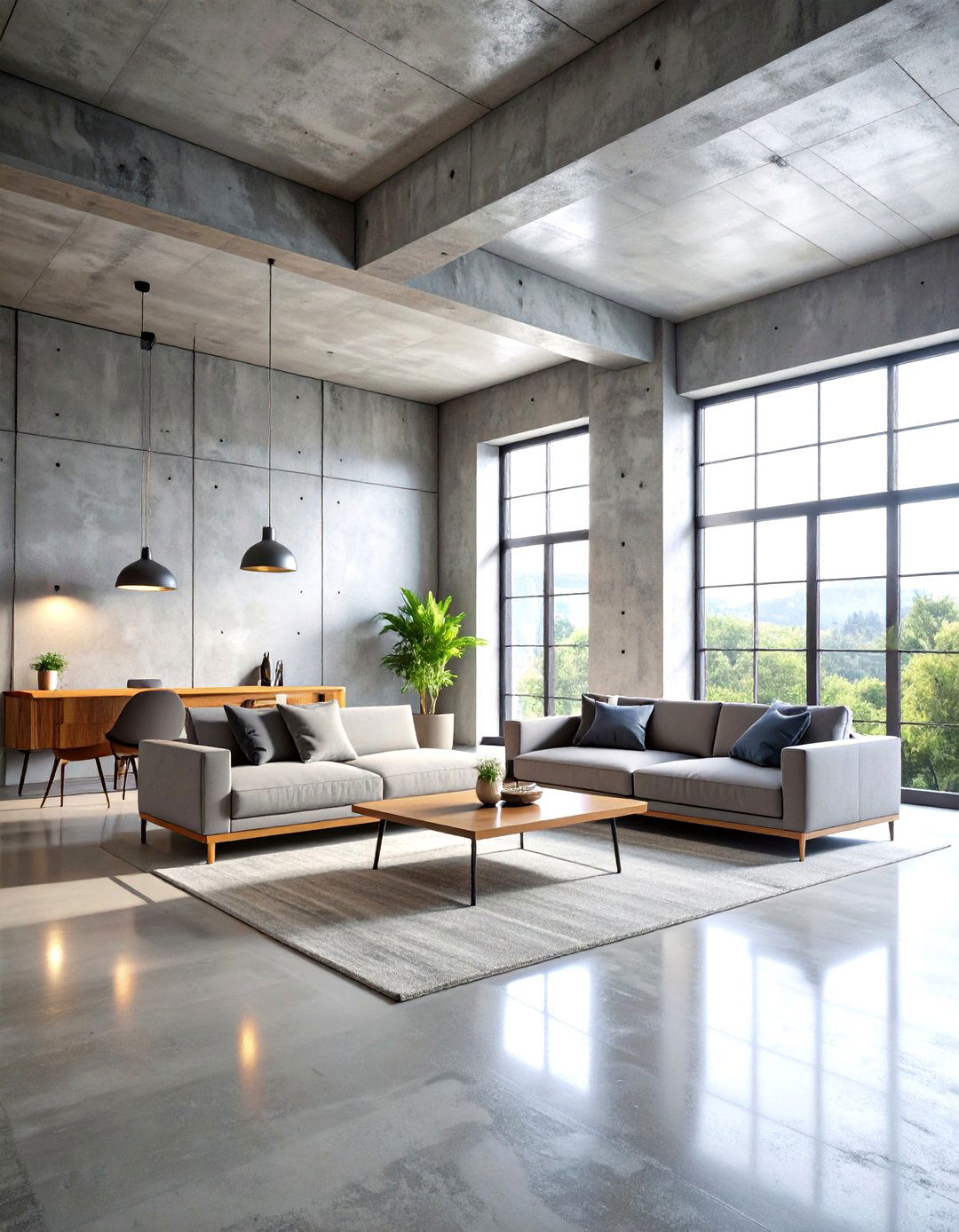
Concrete is a low maintenance, inexpensive option for factory floors and walls that can serve as an excellent alternative to brick walls and wood flooring. This raw concrete industrial interior design approach celebrates minimalism through unfinished surfaces that showcase industrial authenticity. Concrete's raw, minimalist appearance perfectly complements the industrial aesthetic and can be used in various ways throughout spaces, from flooring to countertops and walls. Its durability makes it a practical choice for high-use areas, while its versatility allows for customization with different finishes and stains. Gray concrete walls paired with wood furniture create a modern industrial aesthetic, particularly when using polished or smooth concrete for a sleek, sophisticated effect. The neutral grey tones provide an ideal canvas for layering textures and introducing accent materials like wood and metal throughout the space.
3. Metal Pipe Industrial Interior Design

Pipe fixtures, furniture, and décor are drawn from raw elements of the industrial style, and pipes are already present fixtures in most homes that can be enhanced by leaving them exposed. This metal pipe industrial interior design style celebrates functional elements as decorative features. Instead of hiding these elements, industrial style celebrates them as part of the aesthetic, adding a raw, authentic touch that showcases the beauty of functional design. Exposing pipes and ducts is one of the key elements behind industrial design, using plumbing, ductwork, and electrical conduits as focal points in home design. Exposed pipes can make a bold statement in dining rooms and living spaces, while pipes can be easily added to furniture to complement industrial style when preexisting pipes aren't available. The metallic finish and geometric lines create visual interest while maintaining the utilitarian aesthetic.
4. Edison Bulb Lighting Industrial Interior Design

Bare light bulbs, particularly Edison bulbs hanging solo or in decorative groups as chandeliers, are common elements of industrial home decor. This Edison bulb lighting industrial interior design approach brings vintage charm with modern functionality. Edison lighting fixtures enable lighting accents of industrial elegance and serve as simple solutions for incorporating industrial elements. Edison bulbs are an industrial era classic and crowd-pleaser, used as single pieces, under lampshades, or in groups to form chandeliers that are warm and inviting. Large metal domes, pendant lights, or floor lamps that leave the bulb visible are also popular industrial design ideas. The warm glow of exposed filaments contrasts beautifully with cold metal fixtures, creating atmospheric lighting that enhances the raw, unfinished aesthetic while providing both ambient and task illumination throughout industrial-inspired spaces.
5. Reclaimed Wood Industrial Interior Design
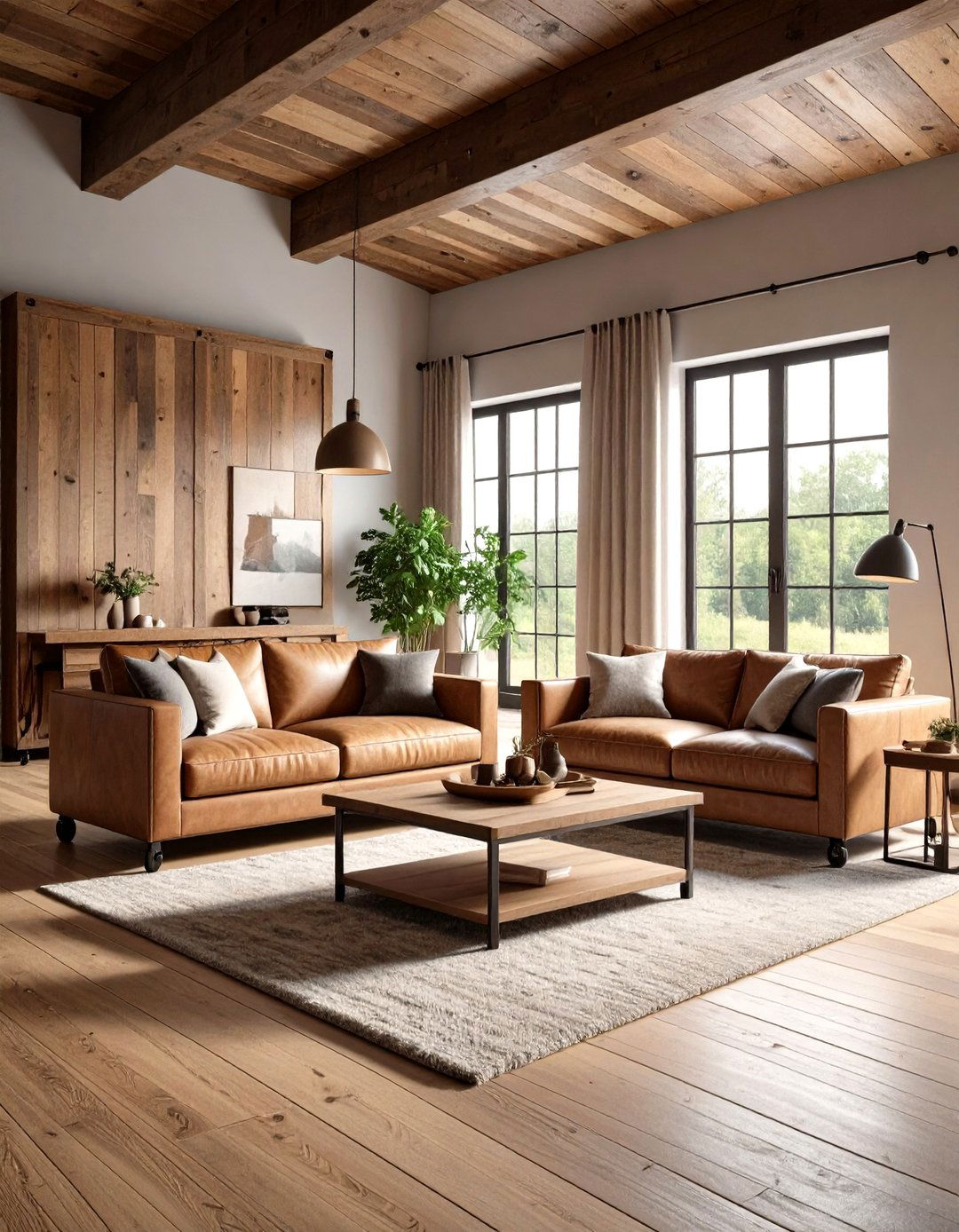
Wood is an easy element to incorporate into any space to give it an industrial look, and if typical industrial style elements feel uninviting and dull, wood can be added to include vintage and industrial chic elements while allowing spaces to remain warm and inviting. This reclaimed wood industrial interior design style perfectly balances rustic charm with industrial edge. Repurposed materials like wooden coffee tables with castor wheels, bookshelves made of reclaimed materials, and repurposed dining tables are staples of industrial style. Reclaimed wooden furniture showcases old-world charm like no other, and repurposing old furniture not only makes good sense but also saves money. Reclaimed wood tables bring a sense of history and character to industrial spaces, featuring unique markings, knots, and imperfections that tell a story and add visual interest. The weathered textures and natural variations create depth while softening the harder industrial elements.
6. Steel Beam Industrial Interior Design
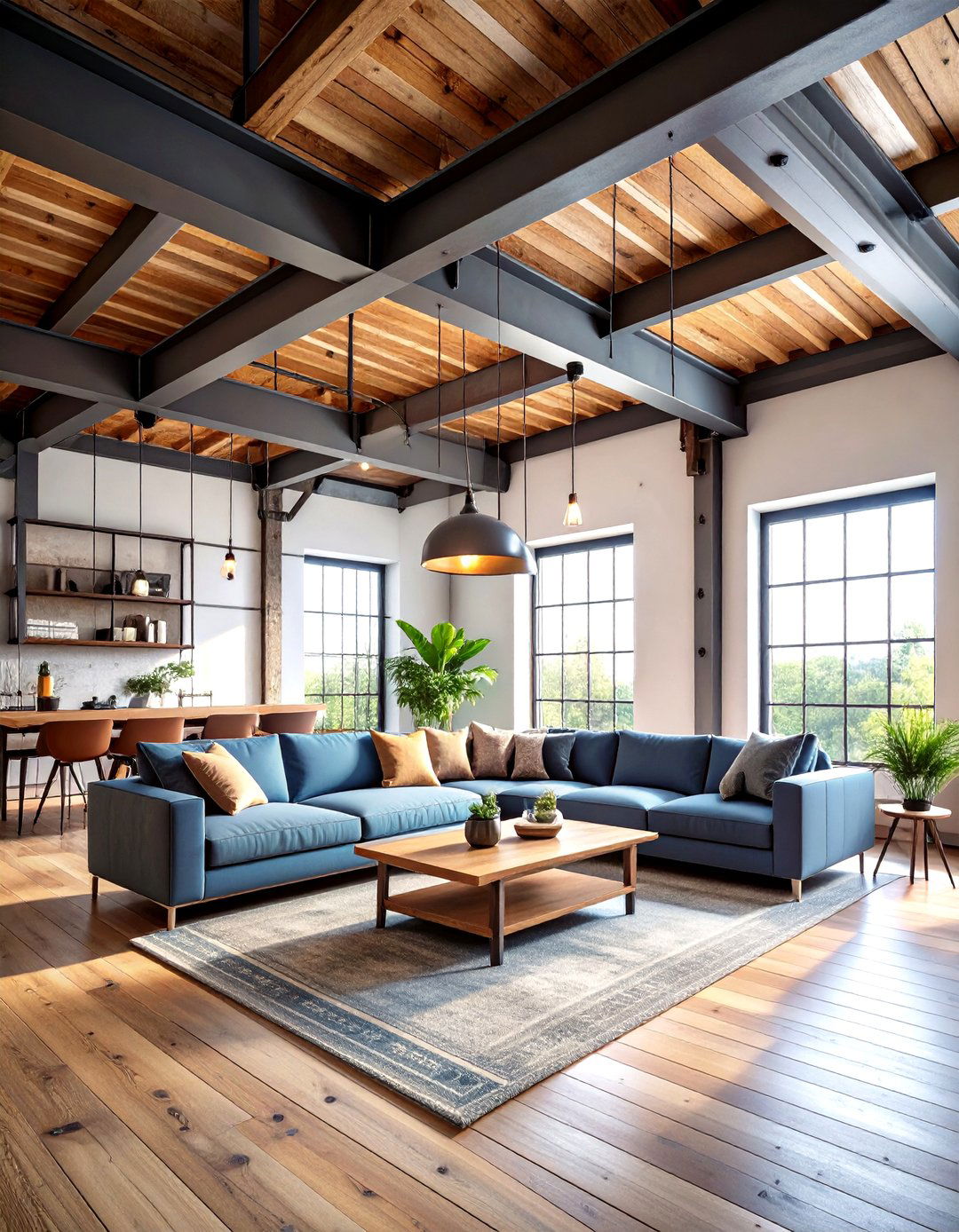
Exposing structural elements such as beams, pipes, and ductwork is a hallmark of industrial design, with approximately 75% of industrial interiors showcasing exposed structural elements. This steel beam industrial interior design celebrates architectural honesty by highlighting load-bearing elements as design features. Industrial design's core fundamentals include celebrating the building's industrial history through open plans, lofts, and high ceilings coupled with exposed elements where columns and beams are left untreated and allowed to bask in their glory. In industrial interiors, elements such as antique wooden beams, metal grills, pipes, and ventilation ducts become authentic accents that are better than other decor elements. The dramatic lines and substantial presence of steel beams create visual anchors within spaces while emphasizing the structural integrity and engineering heritage that defines authentic industrial design. These elements work particularly well in loft-style spaces with soaring ceilings.
7. Vintage Machinery Industrial Interior Design

This vintage machinery industrial interior design approach incorporates authentic industrial artifacts and equipment as functional décor elements. Workshop aesthetic industrial design takes inspiration from vintage workbenches and factory equipment, featuring exposed bolts, vise-like mechanisms, and unfinished wood surfaces. Reclaiming old furniture has become a craze with the increase in popularity of industrial design, where restoring vintage furniture can be an inexpensive way to fill spaces with appreciated pieces. Authentic gear mechanisms, pulleys, and industrial tools serve as sculptural elements that tell stories of manufacturing heritage. Pulleys adorn floor lamps with street-style lanterns made of twisted steel, while metal grates encase lights for serious industrial impact. These pieces function as conversation starters while maintaining the utilitarian aesthetic. The patina and wear patterns on vintage machinery add authenticity that cannot be replicated, creating focal points that bridge past and present industrial innovation.
8. Copper Accent Industrial Interior Design
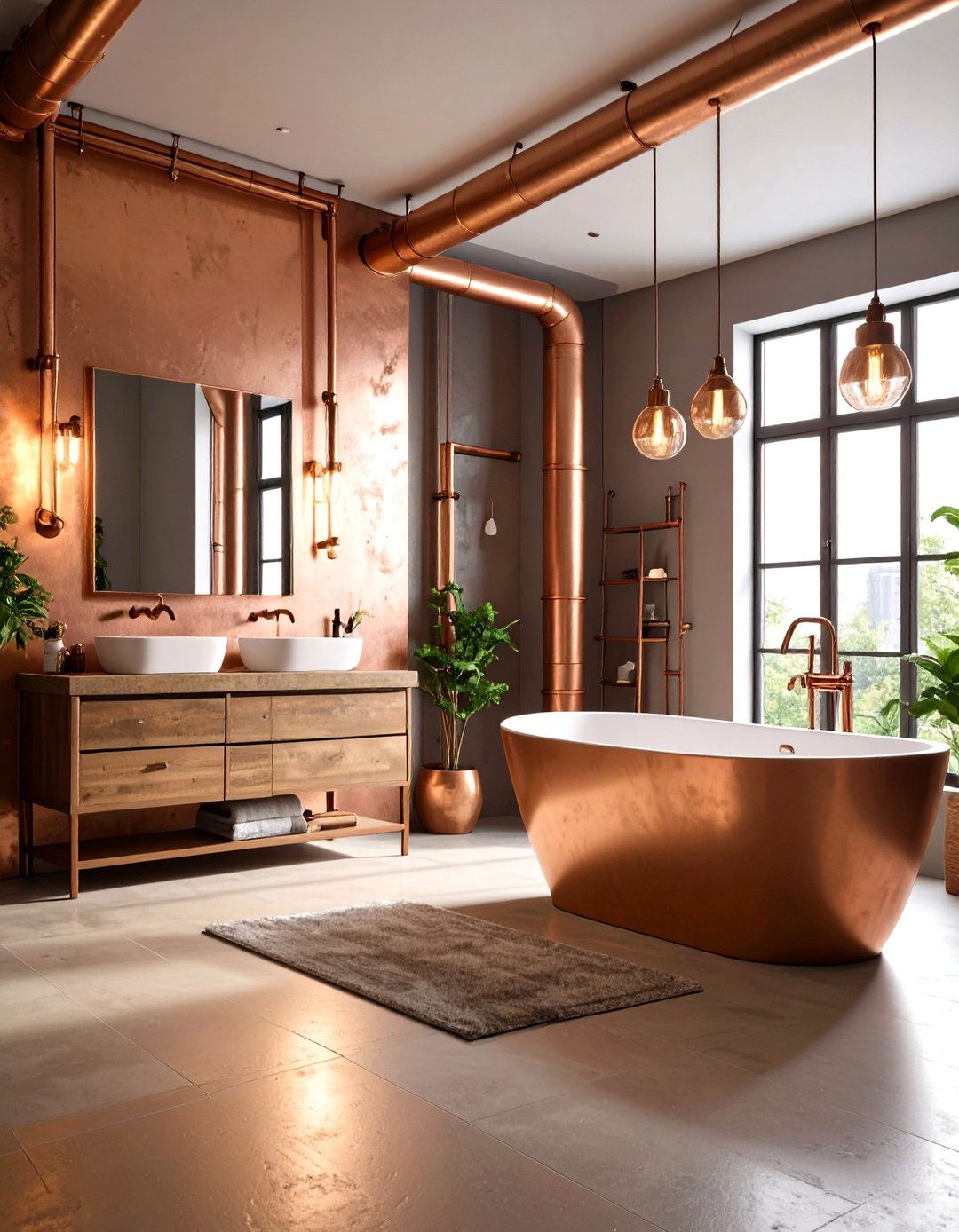
Copper pipes and fixtures add warmth and a touch of luxury to industrial spaces, with the patina that develops over time only enhancing their charm through exposed pipes, faucets, or decorative elements like towel bars. This copper accent industrial interior design style introduces rich, warm tones that soften the typically cool industrial palette. Mixed metallics, particularly mixing warm and cool-toned metals like copper and steel, is a growing trend within industrial furniture space, offering greater visual interest. Copper table lamps with copper domes, pulleys, and heavy black iron fittings harken back to Victorian industrial aesthetics. The oxidation process creates unique color variations from bright copper to deep green patina, ensuring each piece develops individual character over time. Free-floating fittings in copper, gold, or brass finishes ensure the fittings add distinctive touches to overall design schemes. These warm metallic accents create visual balance against cooler steel and iron elements.
9. Open Floor Plan Industrial Interior Design
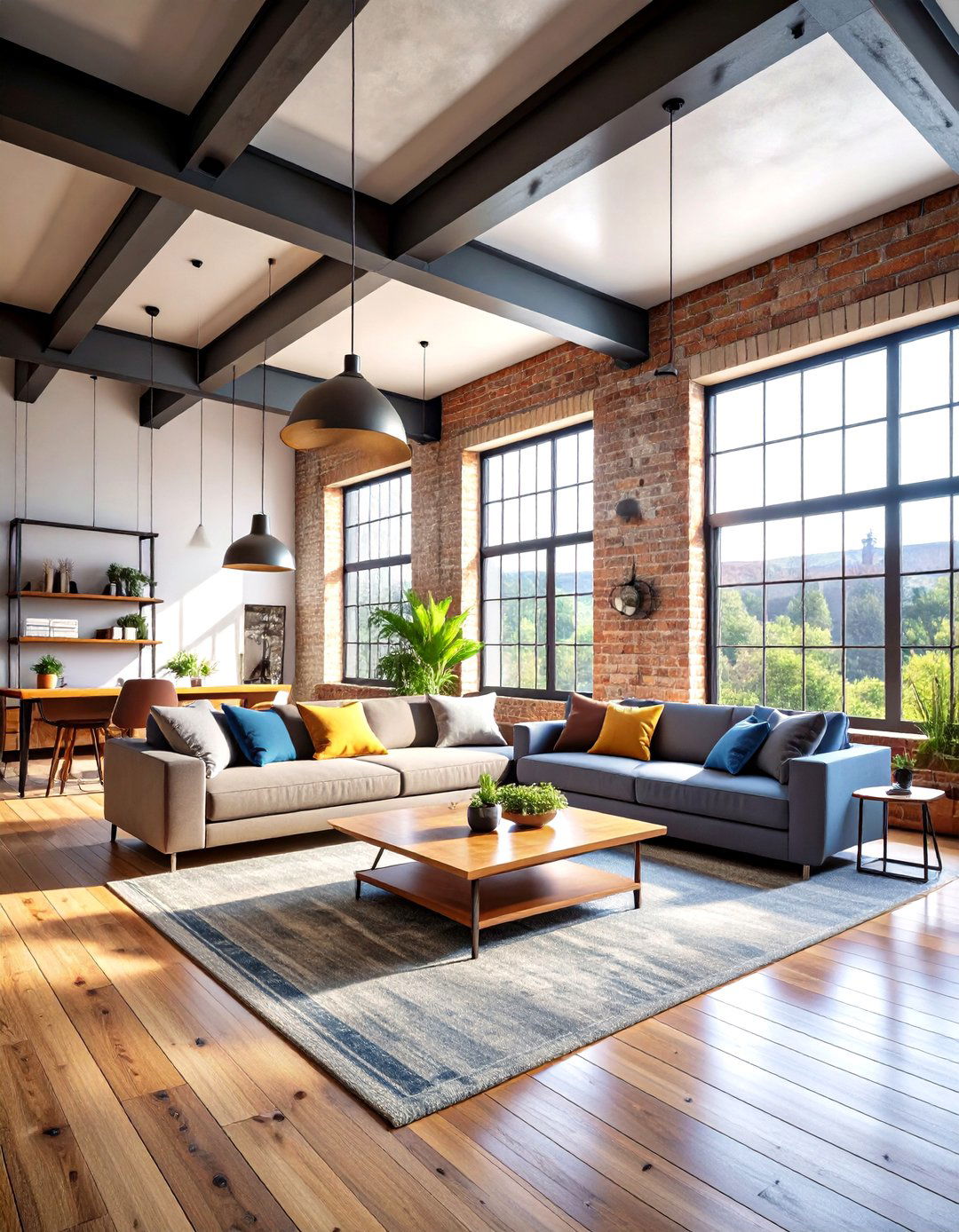
Industrial design embraces the concept of open floor plans, creating spacious and airy environments that draw inspiration from the vast, open layouts of factories and warehouses, allowing for fluid movement within spaces. This open floor plan industrial interior design maximizes spatial flow while maintaining industrial authenticity. Spaces should not be limited but should breathe, representing architectural freedom where every square meter can be filled but not overloaded. Open layouts work well for industrial interior design homes and help emphasize the warehouse feel. Large, grid-paned windows let in fresh air and natural light, while lofted floors and open plans reflect safety and functionality requirements of original factories. The absence of unnecessary partitions fosters a sense of freedom and flexibility, contributing to overall functionality and adaptability of the design. This approach allows natural light to flow freely while creating versatile spaces for modern living.
10. Galvanized Metal Industrial Interior Design

Graphic lines created with black metals rather than sinuous lines and patterns define industrial style, emphasizing clean, geometric forms. This galvanized metal industrial interior design celebrates the protective coating process that gives metal surfaces their distinctive appearance and durability. Metal elements like steel and glass are manmade materials that share focus with modern styles, though industrial emphasizes the unpolished aesthetic. Metal chairs such as steel or aluminum designs offer sleek, modern seating options that can be paired with reclaimed wood tables for texture mixing or used as standalone pieces for cohesive industrial looks. The silver-grey finish of galvanized surfaces provides excellent corrosion resistance while adding textural interest through the crystalline spangled pattern created during the coating process. Heavy metal fixtures with matte finishes and exposed hardware create unique blends of functionality and aesthetic appeal that convey strength and durability. These surfaces develop character through use while maintaining their protective properties.
11. Weathered Leather Industrial Interior Design
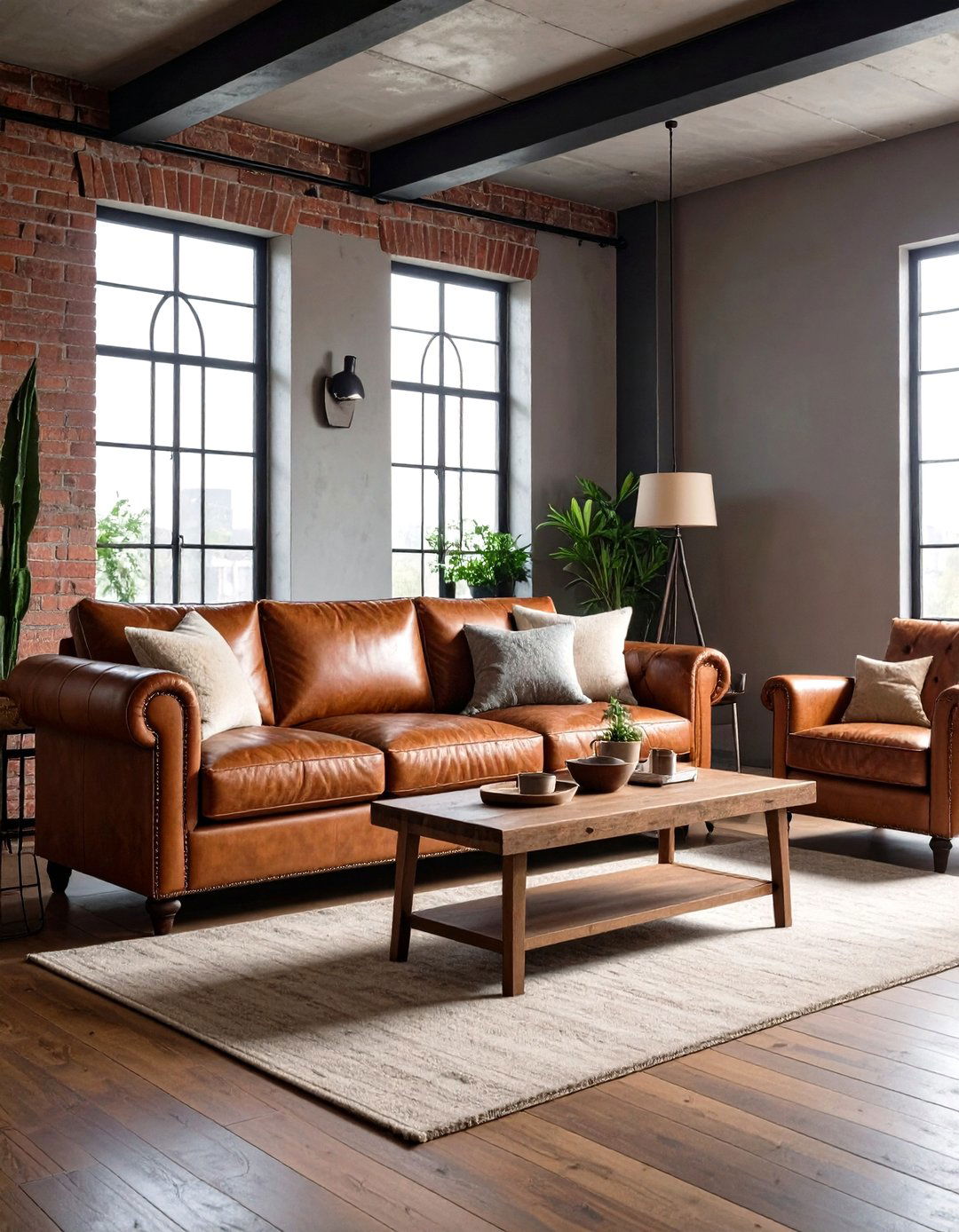
Fabrics like weathered leather work well in industrial environments for both furniture and accents, creating a lived-in and cozy feel. This weathered leather industrial interior design approach introduces organic textures that complement hard industrial materials. A leather sofa is a perfect centerpiece for industrial spaces, with rich, worn texture adding warmth and sophistication while its durability makes it ideal for everyday use. A chic leather sofa or armchair can become the center of rooms, while maintaining hard and soft texture mixes in bedrooms through metal beds with simple designs decorated with woolen plaids and pillows. The natural aging process creates unique patina and character marks that tell stories of use and time. Choose sofas in deep, earthy tones to complement industrial palettes. Leather armchairs and sofa sets encapsulate spaces to form defined areas while providing material contrast against urban themes. The supple texture provides tactile comfort against the harder surfaces typical of industrial design.
12. Cast Iron Industrial Interior Design

Black metal is used widely to accentuate industrial design style's straight lines and rigid forms, with bold shapes and lines that are muted and subtle yet become solid design statements. This cast iron industrial interior design celebrates the strength and permanence of heavy metal construction. Wrought iron chandeliers greet guests with Victorian finesse, while wrought iron frames in bike wheel chandeliers hang from central points creating triangular shapes perfect for illuminating dinner tables. Black or gold accents with exposed metalwork give factory-floor flair without splinters, bringing refined and elegant looks through finishes on lighting fixtures, faucets, hardware, and appliances. The substantial weight and durability of cast iron pieces anchor spaces while providing lasting functionality. Antique trolley wheels and vintage caster wheels can be added to furniture restoration projects for mobility and additional industrial style elements. The dark, matte finish absorbs light to create dramatic shadows and depth throughout industrial-inspired interiors.
13. Industrial Pendant Light Interior Design
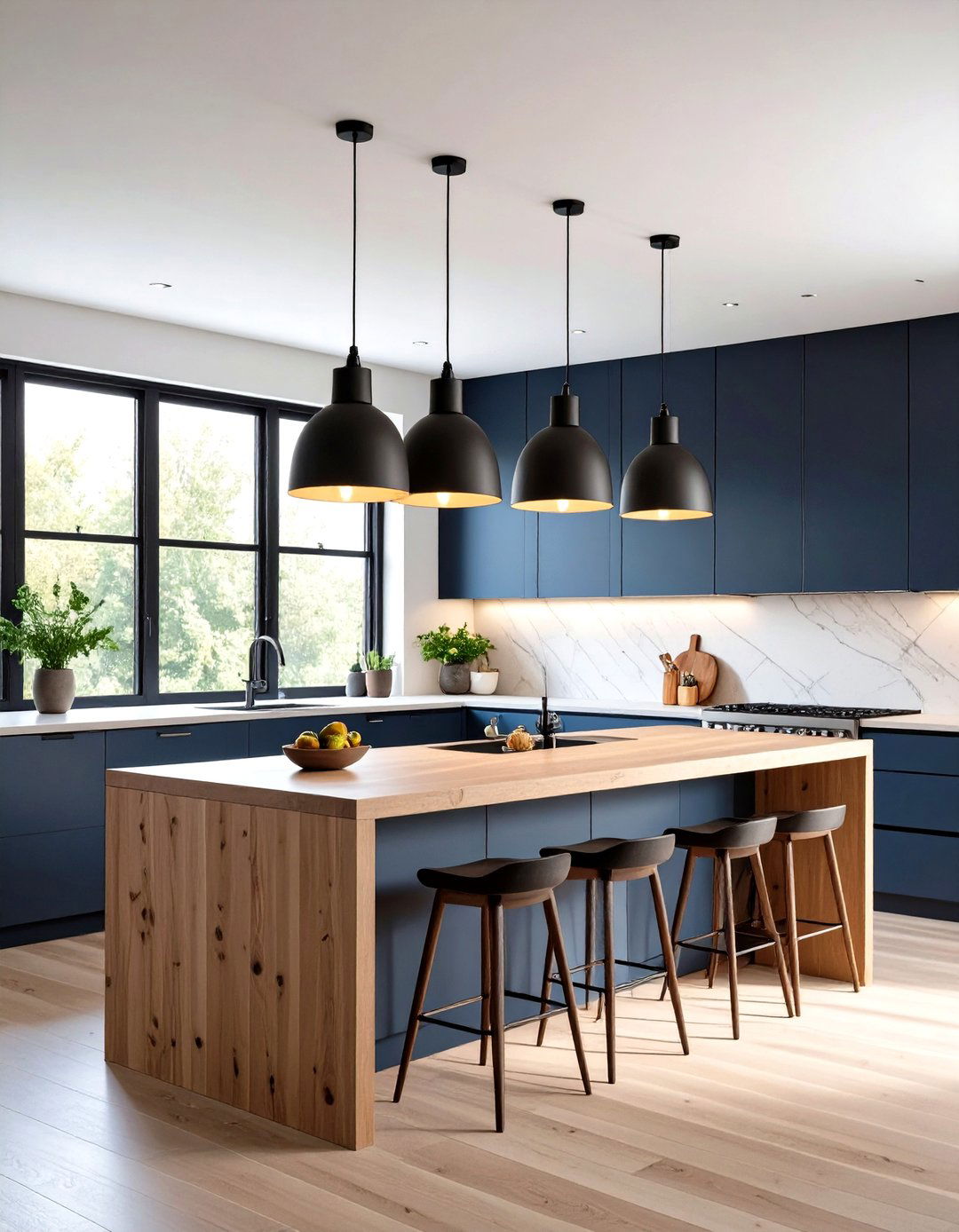
Industrial lighting fixtures such as pendant lights with exposed bulbs can become statement pieces that not only provide illumination but also contribute to the overall aesthetic. This industrial pendant light interior design approach creates dramatic focal points while delivering functional lighting. Industrial-style mini pendant lights feature sockets, valves, and designs well-suited to modern spaces, while pendant light bars with lampshades hang suspended by pulleys for ceiling-bound looks with industrial twists. From cage pendants and exposed Edison bulbs to matte black lights and anodized metal with knurled patterns, industrial style celebrates craft by allowing factory-made features to shine as design elements. Pendant lights with metal shades or exposed bulbs make bold statements, hung in clusters or individually to create focal points and provide targeted illumination over seating areas or tables. Clean lines in metal help refine the style through fixtures with exposed bulbs and simple designs. The suspended nature creates visual interest at eye level while freeing up floor and surface space.
14. Rustic Hardware Industrial Interior Design
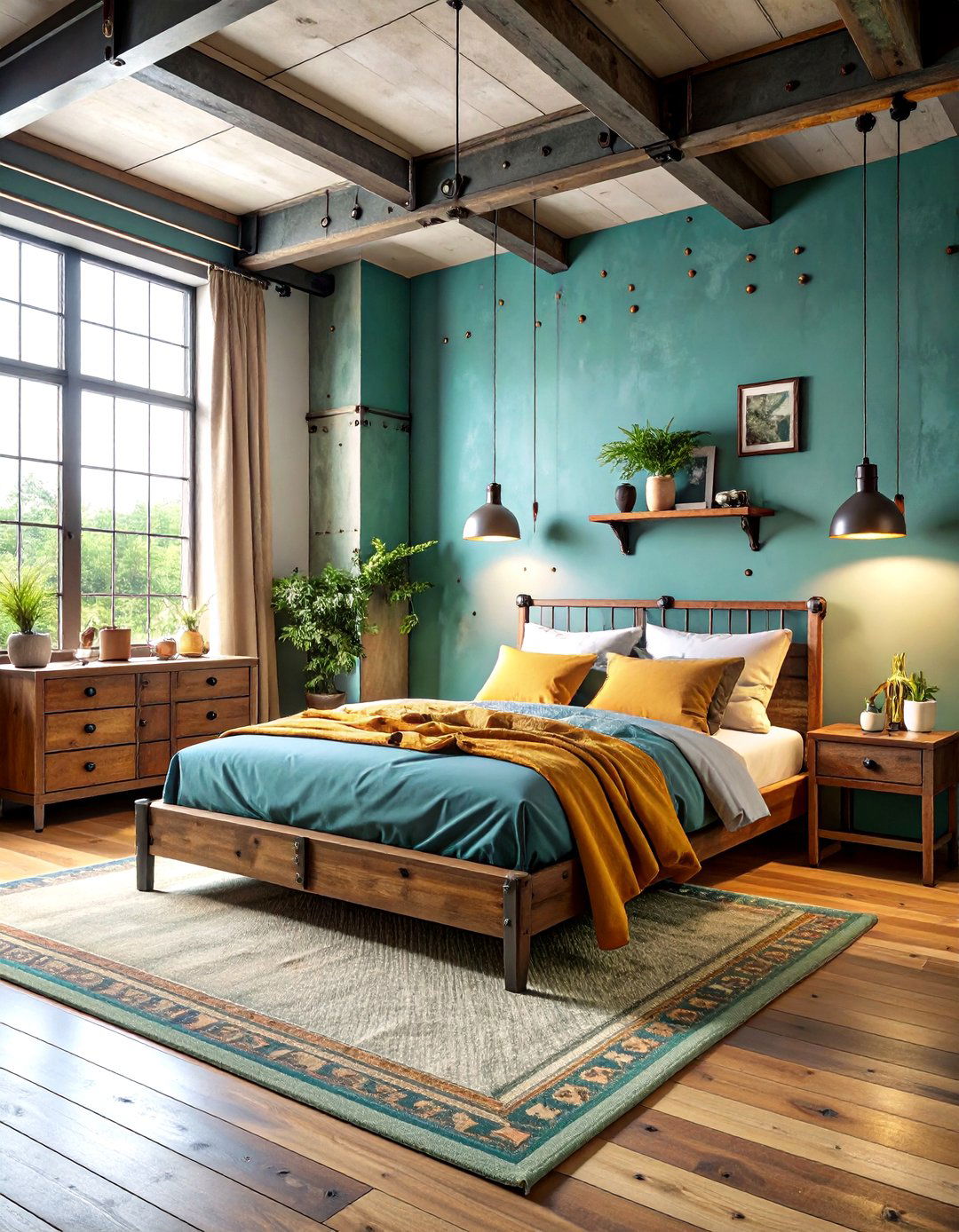
Exposed rivets, vintage finishes with patina, sturdy materials, and dark smokey hues form a style that feels one part rockstar, one part mechanic. This rustic hardware industrial interior design emphasizes the beauty of functional metal components as decorative elements. Fuse gauges added to piping light fixture stems create brand new pieces with old looks, while fan-style designs with five lights shrouded in metal add warmth. Workshop aesthetic elements include exposed bolts, vise-like mechanisms, and unfinished surfaces that add utilitarian charm to spaces. Brass fittings and steel-framed mirrors add character without dominating rooms, particularly in smaller bathrooms where subtle elements help create texture and visual appeal. The oxidation and wear patterns on vintage hardware create authentic patina that speaks to industrial heritage. Door handles, cabinet pulls, hinges, and brackets become integral design elements that unify spaces while maintaining the honest, functional aesthetic that defines industrial style. These details accumulate to create cohesive environments rich with textural interest.
15. Concrete Floor Industrial Interior Design
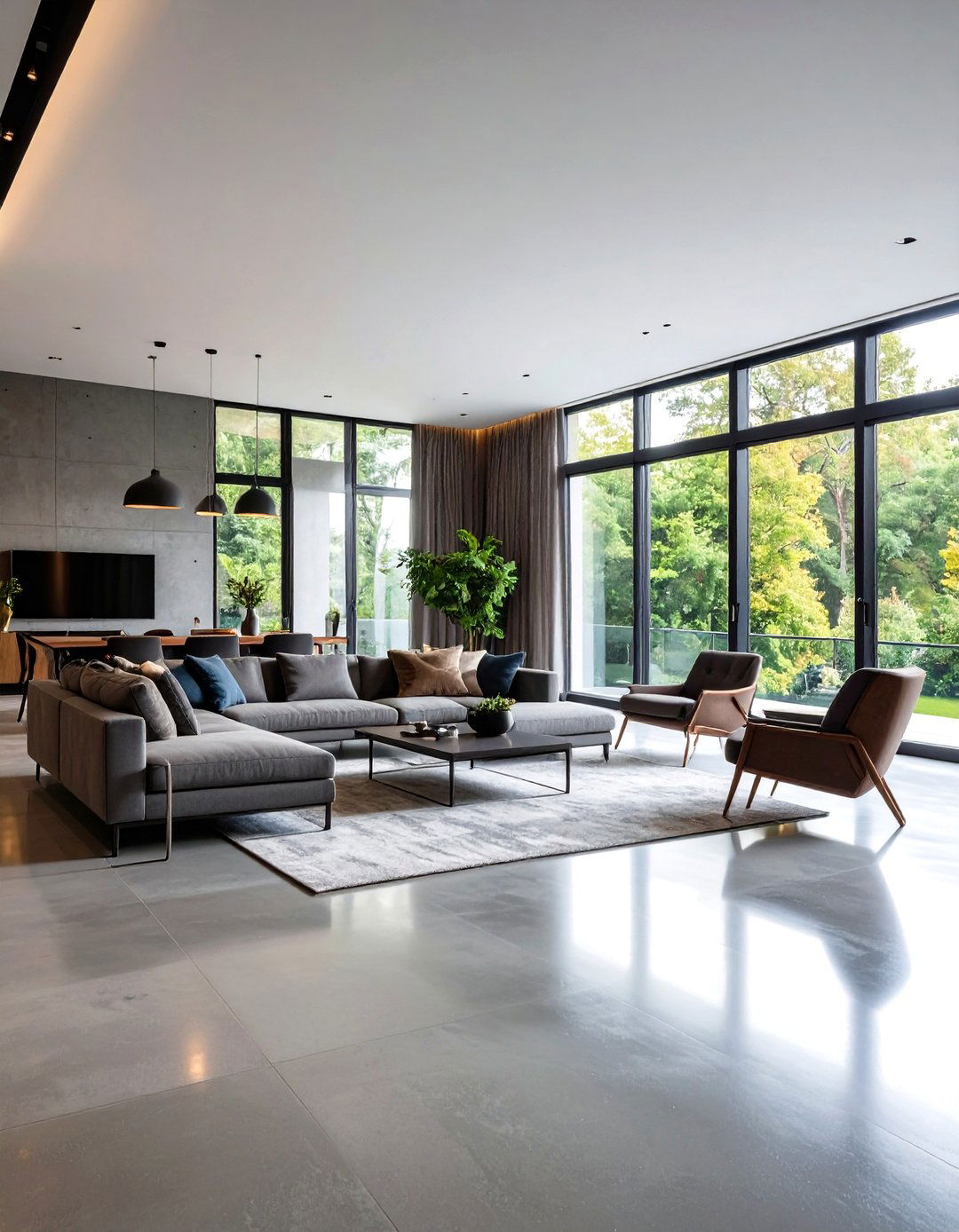
Polished concrete flooring is durable, easy to clean, and adds a sleek, modern touch while perfectly complementing the industrial aesthetic. This concrete floor industrial interior design provides a seamless foundation that enhances the raw, minimalist appeal of industrial spaces. Concrete flooring is a hallmark of industrial design, offering durability and practicality while enhancing the raw, unfinished look that characterizes this aesthetic. Concrete can serve as an excellent alternative option to brick walls and wood flooring, representing a genius way to inexpensively elevate industrial aesthetics. The monolithic surface creates visual continuity throughout open floor plans while reflecting light to brighten spaces. Concrete can be used in various ways throughout spaces, from flooring to countertops and walls, with versatility allowing customization through different finishes and stains. Aggregate exposure, acid staining, and polishing techniques create unique textures and colors while maintaining the utilitarian character. The thermal mass properties provide temperature regulation benefits in addition to aesthetic appeal.
16. Metal Frame Furniture Industrial Interior Design
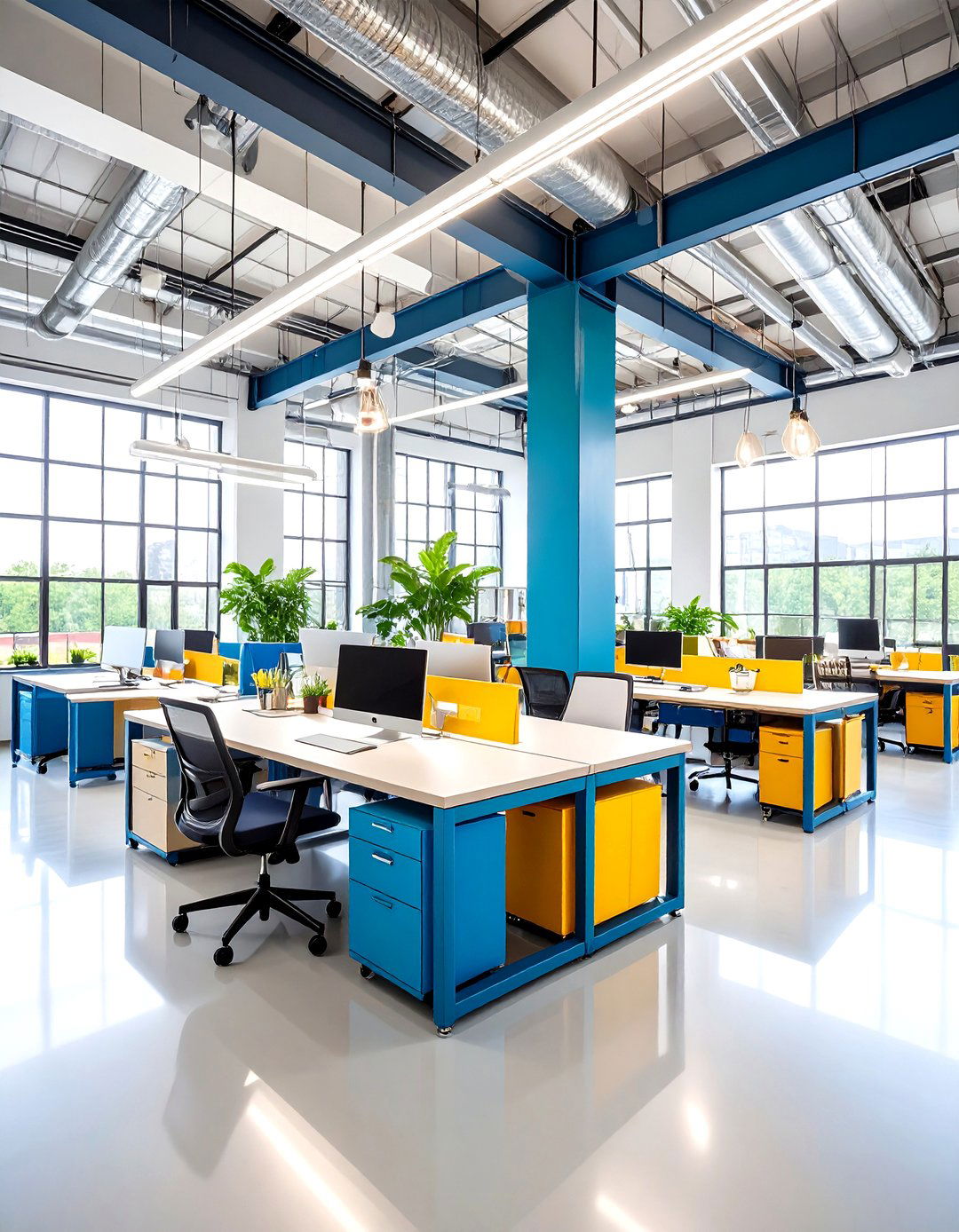
Furniture in industrial interiors follows a utilitarian aesthetic, often characterized by sturdy, no-nonsense pieces where metal and reclaimed wood take center stage, embodying durability and functionality. This metal frame furniture industrial interior design combines structural honesty with practical function. Industrial coffee tables commonly mix metal structures with wooden or plywood tops, and such combinations with thoughtful color choices guarantee smooth implementation into industrial style interiors. Metal frames add industrial feel while short hairpin legs contribute to modern-retro vibes, creating compact designs that prioritize both aesthetics and durability. Industrial shelving units made from metal or reclaimed wood provide both practical storage and vintage aesthetic appeal. Uncomplicated designs and clean lines define industrial furniture, reflecting the essence of efficiency without sacrificing style. The skeletal framework reveals construction methods while creating lighter visual weight compared to solid wood pieces. These designs celebrate the marriage of form and function that epitomizes industrial aesthetics.
17. Distressed Wood Industrial Interior Design
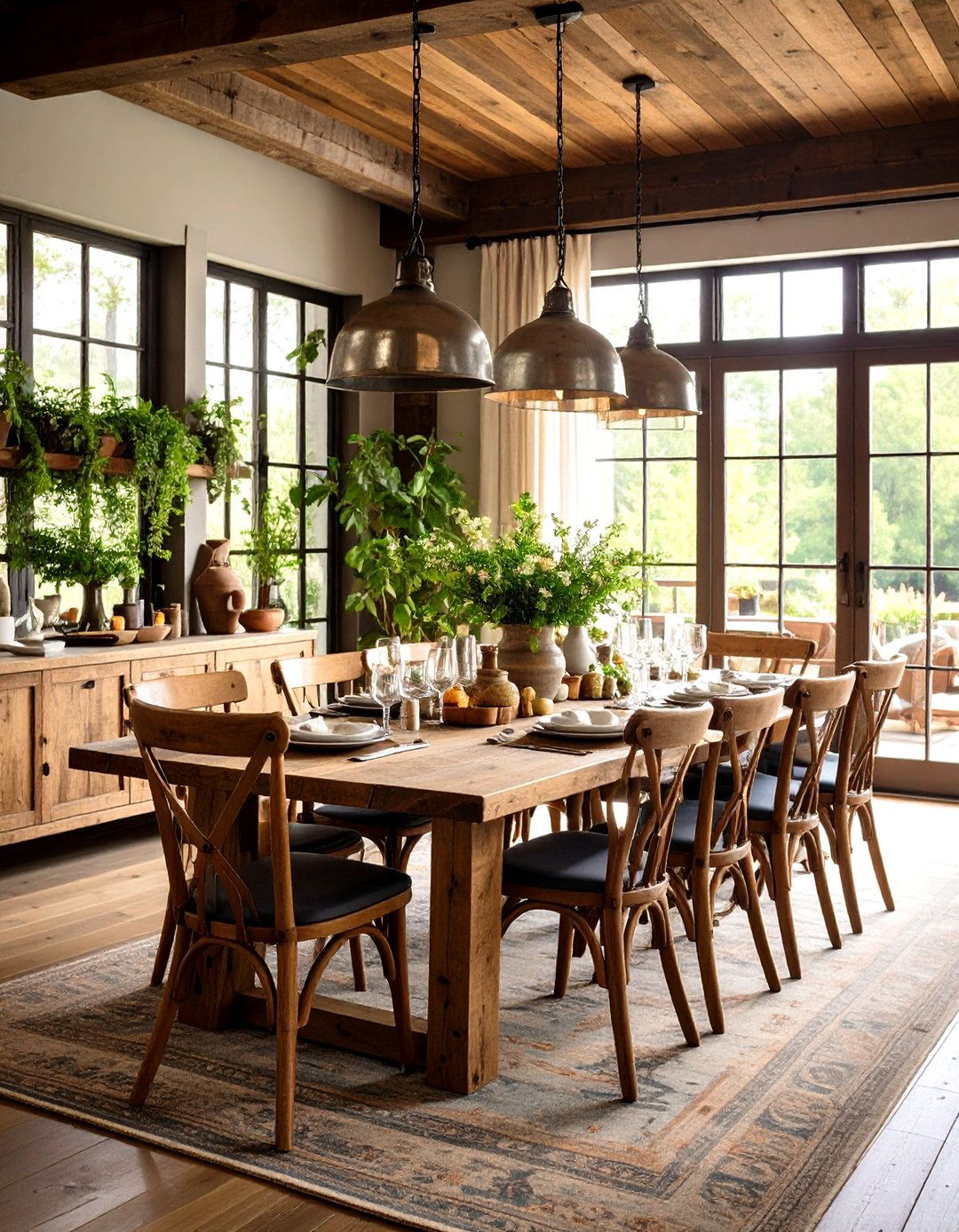
Reclaimed wooden furniture showcases the old-world charm like no other, and decking houses with repurposed furniture is not just good sense but also saves big bucks. This distressed wood industrial interior design celebrates imperfection and history through weathered surfaces. Wood texture and pallet-like construction hint at industrial influence, adding touches of ruggedness to character while combining styles that cultivate airy feels and promote robust complexions. Weathered textures across surfaces and bodies with exposed metal fixings reinforce industrial aesthetics while maintaining rusticity. Old wood shelves and drawers with retro lamps and large windows with heavy curtains add elegance to industrial bedroom spaces. The natural aging process creates unique grain patterns, nail holes, and surface variations that tell stories of previous use. Wood is especially visible on furniture and structural building parts, effectively warming up interiors. Distressed finishes can be enhanced through sanding, staining, and selective wear techniques that amplify character while maintaining structural integrity for contemporary applications.
18. Black Iron Fixture Industrial Interior Design

For more modern and sleek looks, black or stainless steel pipes and fixtures provide durability, easy maintenance, and contribute to overall industrial vibes with cool, contemporary contrast to warmer copper and wood tones. This black iron fixture industrial interior design creates dramatic contrast while maintaining authentic industrial character. Industrial lighting design incorporates heavy metal fixtures, matte black finishes, and exposed hardware for unique blends of functionality and aesthetic appeal that convey strength and durability. Matte black finishes offer bold, contemporary looks that ooze confidence, particularly when paired with colors like concrete grey, steel blue, or deep charcoal for walls and floors. Black steel finishes with two-year warranties keep industrial designs grounded in reality while oil-rubbed bronze creates nifty chandeliers for bedrooms, kitchens, or dining room ceilings. The deep, light-absorbing finish creates sophisticated depth while highlighting form and proportion. Black iron maintains the honest material expression fundamental to industrial design while providing contemporary refinement suitable for modern living spaces.
19. Vintage Industrial Storage Interior Design
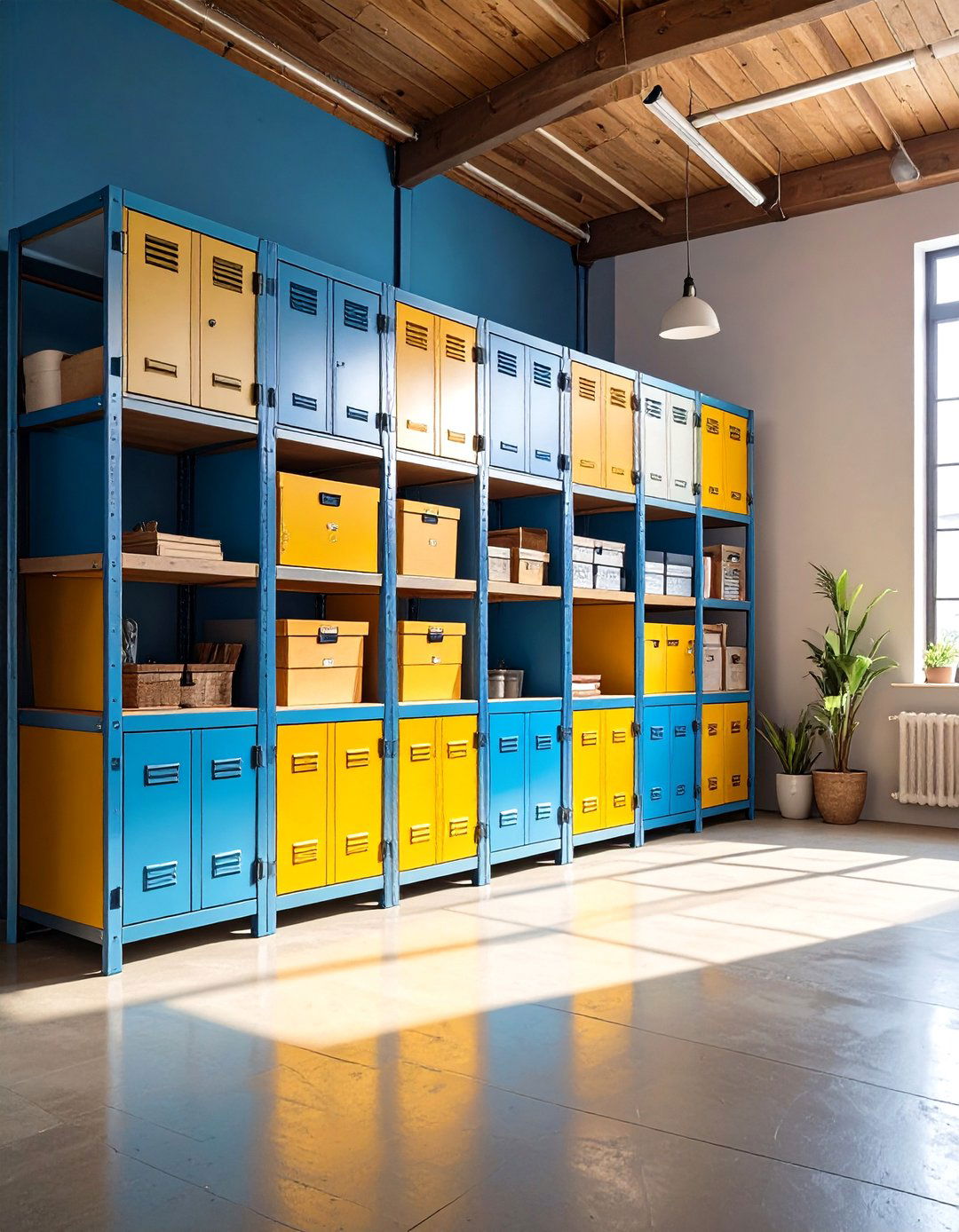
Industrial shelving units made from metal or reclaimed wood provide both practical storage and vintage aesthetic, serving as functional sculptures in living spaces. This vintage industrial storage interior design transforms organization into decorative art through authentic materials and forms. Entertainment centers or TV stands house electronics and accessories, while bookcases keep books, picture frames, and knickknacks in check within industrial living room designs. Industrial style and monochromatic color combinations work well with shades of blacks, greys, and whites, making storage pieces easily blend into overall schemes. When choosing storage for industrial spaces, focus on functionality while selecting pieces that complement the warehouse aesthetic. Industrial design is all about minimal decor and sparse furnishings, making efficient storage solutions essential for maintaining clean-cut looks. Vintage lockers, metal shelving units, and repurposed industrial containers serve dual purposes as storage and display while maintaining the utilitarian honesty that defines authentic industrial design principles.
20. Mixed Material Industrial Interior Design
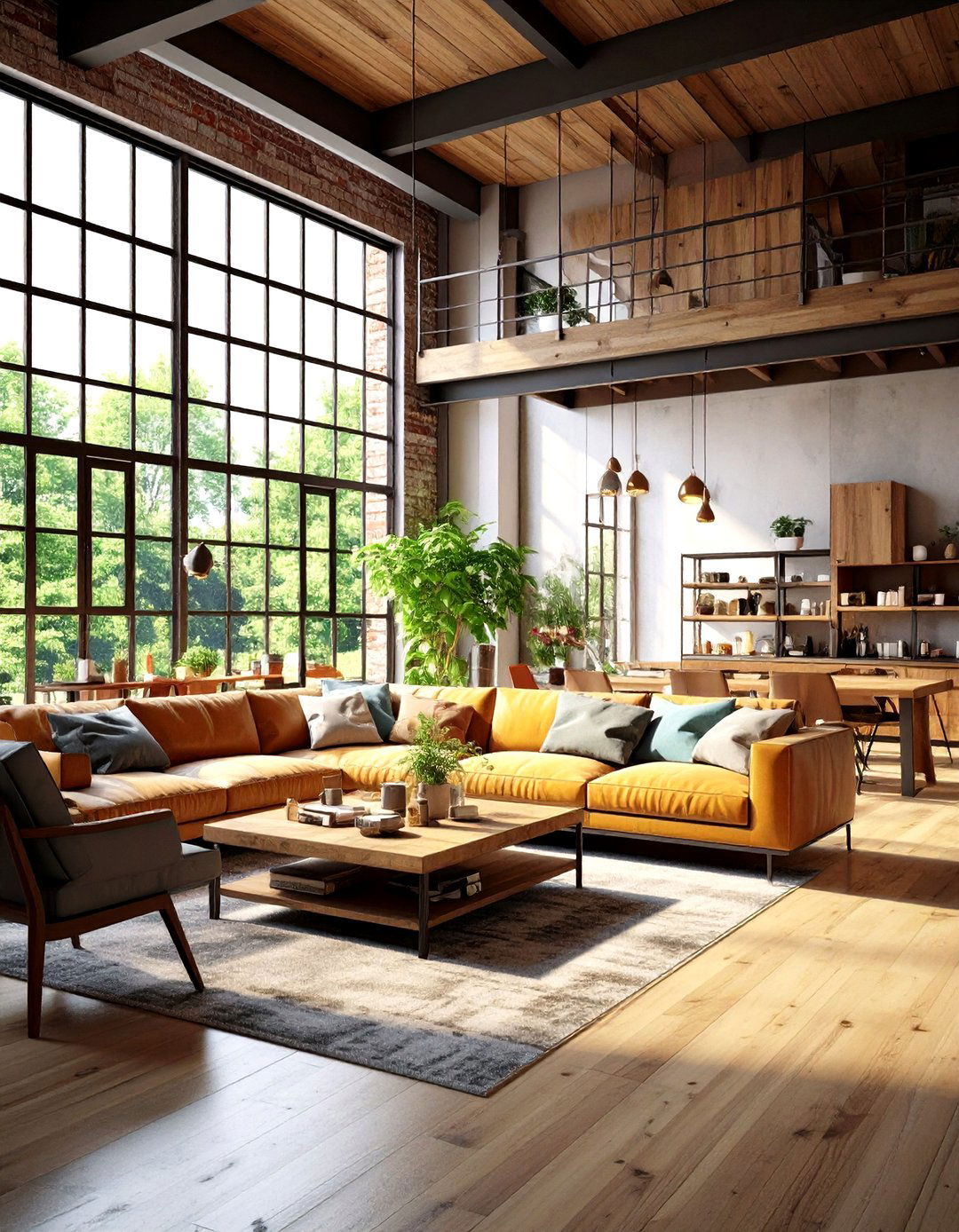
The juxtaposition of natural elements like wood against raw metal is a jarringly handsome combination that creates striking visual contrast. This mixed material industrial interior design celebrates the harmony found in combining diverse textures and finishes. Incorporating mixed finishes and textures keeps this style from looking too much like a warehouse, with rounded edges and neutral colors giving warm touches. Mixing styles creates harmonious blends of rugged industrial elements with elegant features when paired together to enhance each other's best qualities. Mixing industrial lighting types like pendant lights and ceiling fixtures creates layers of light for depth and dimension. Brick and concrete walls create contrast between rough textures and smooth surfaces, adding depth and character while providing neutral backdrops for various furniture styles and colors. Don't be afraid to mix up finishes, styles, and materials, as adding mix into match opens the doors of décor possibilities. This approach creates dynamic environments where each material contributes unique properties while maintaining cohesive industrial authenticity through thoughtful balance and proportion.
Conclusion:
Industrial interior design offers endless possibilities for creating spaces that celebrate authentic materials, functional beauty, and architectural honesty. This harmonious blend of history and modernity, ruggedness and sophistication, results in environments that are as functional as they are aesthetically compelling. Whether in trendy loft apartments or converted warehouse workspaces, industrial interior design remains a timeless and captivating expression of urban living. By incorporating elements like exposed brick, raw concrete, metal fixtures, and reclaimed wood, you can transform any space into an industrial-inspired haven. The combination of raw aesthetics and functional designs provides unique and captivating atmospheres that bring sense of history and authenticity into spaces. Each style idea offers opportunities to personalize your space while maintaining the utilitarian spirit that makes industrial design both practical and visually striking.



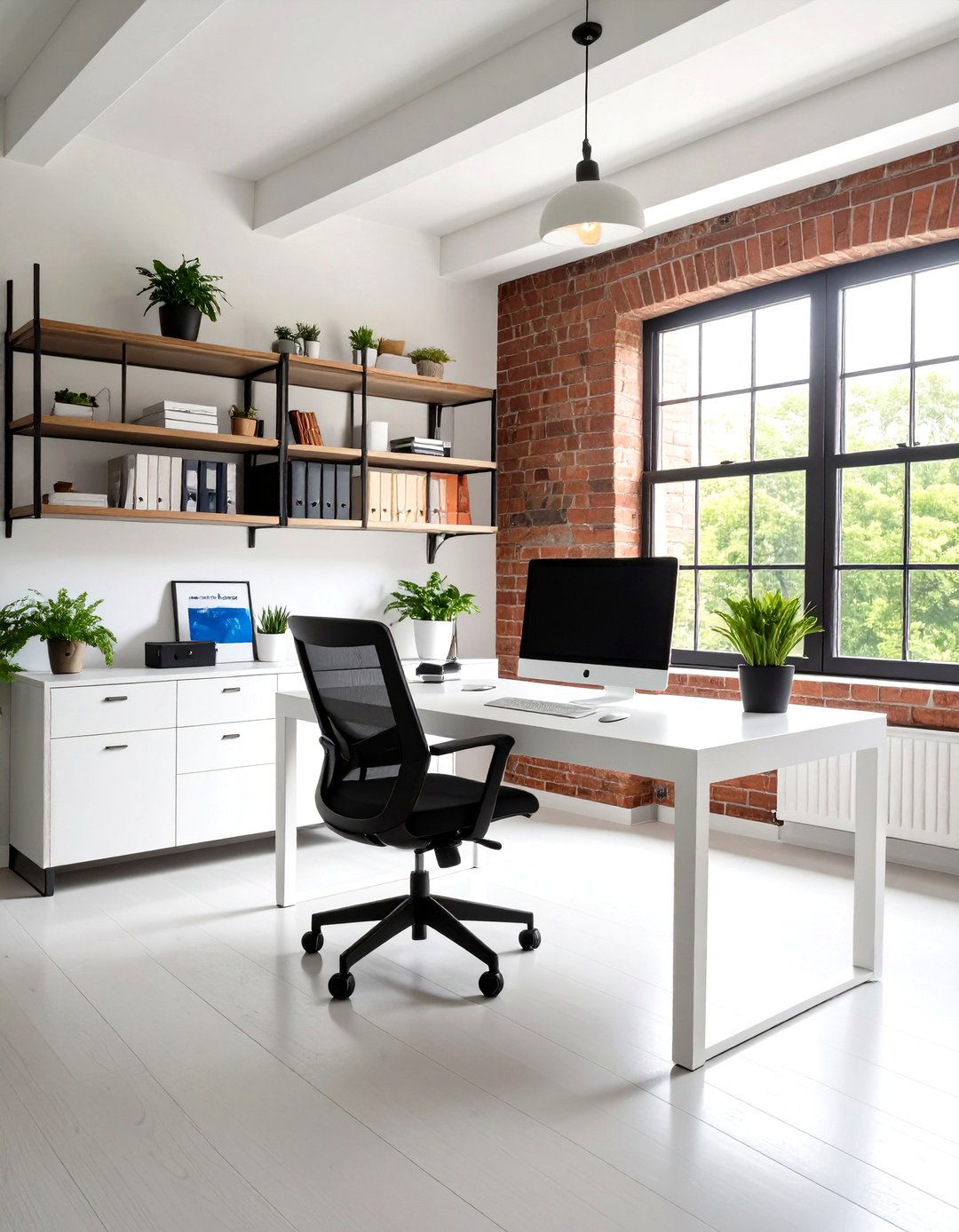
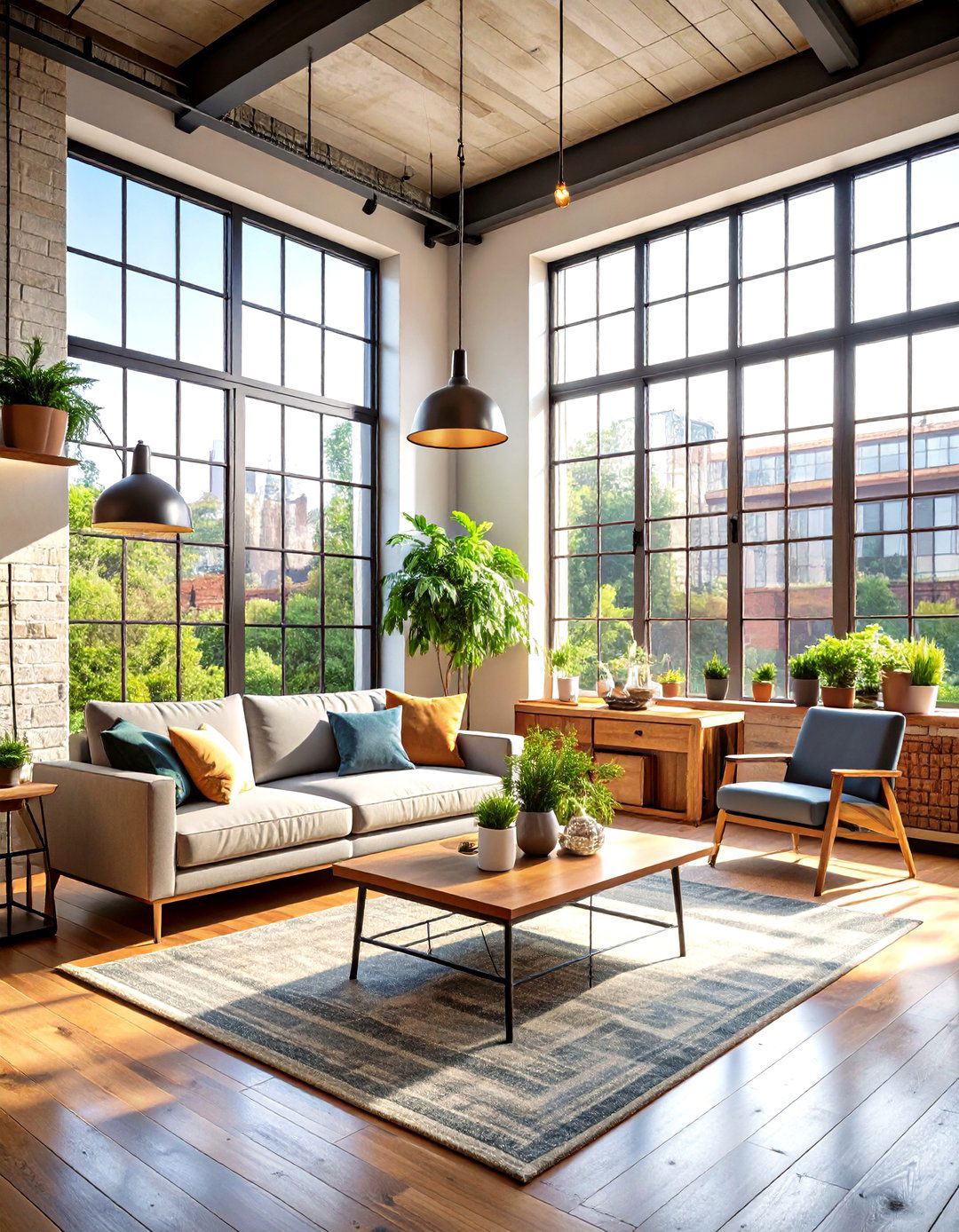
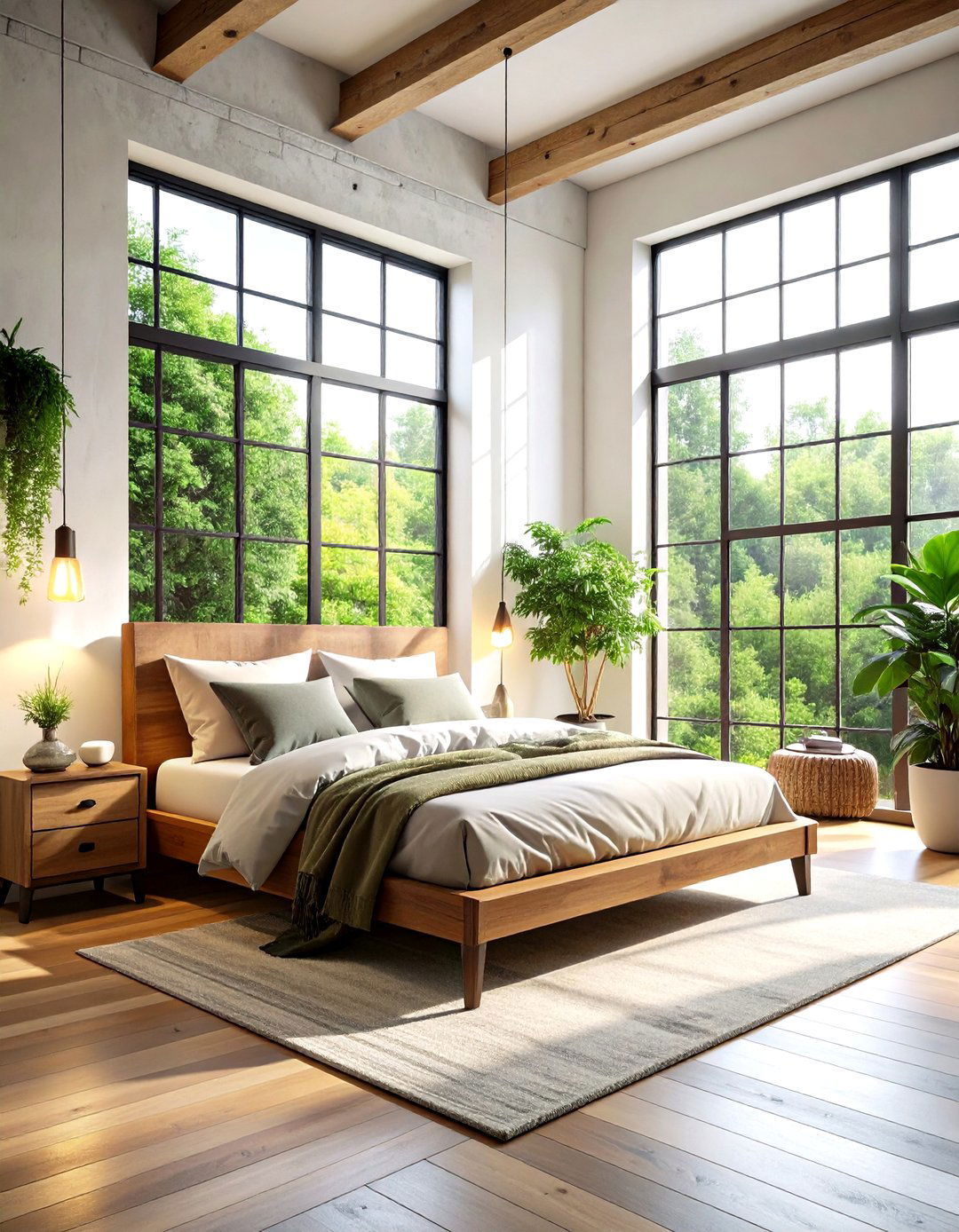
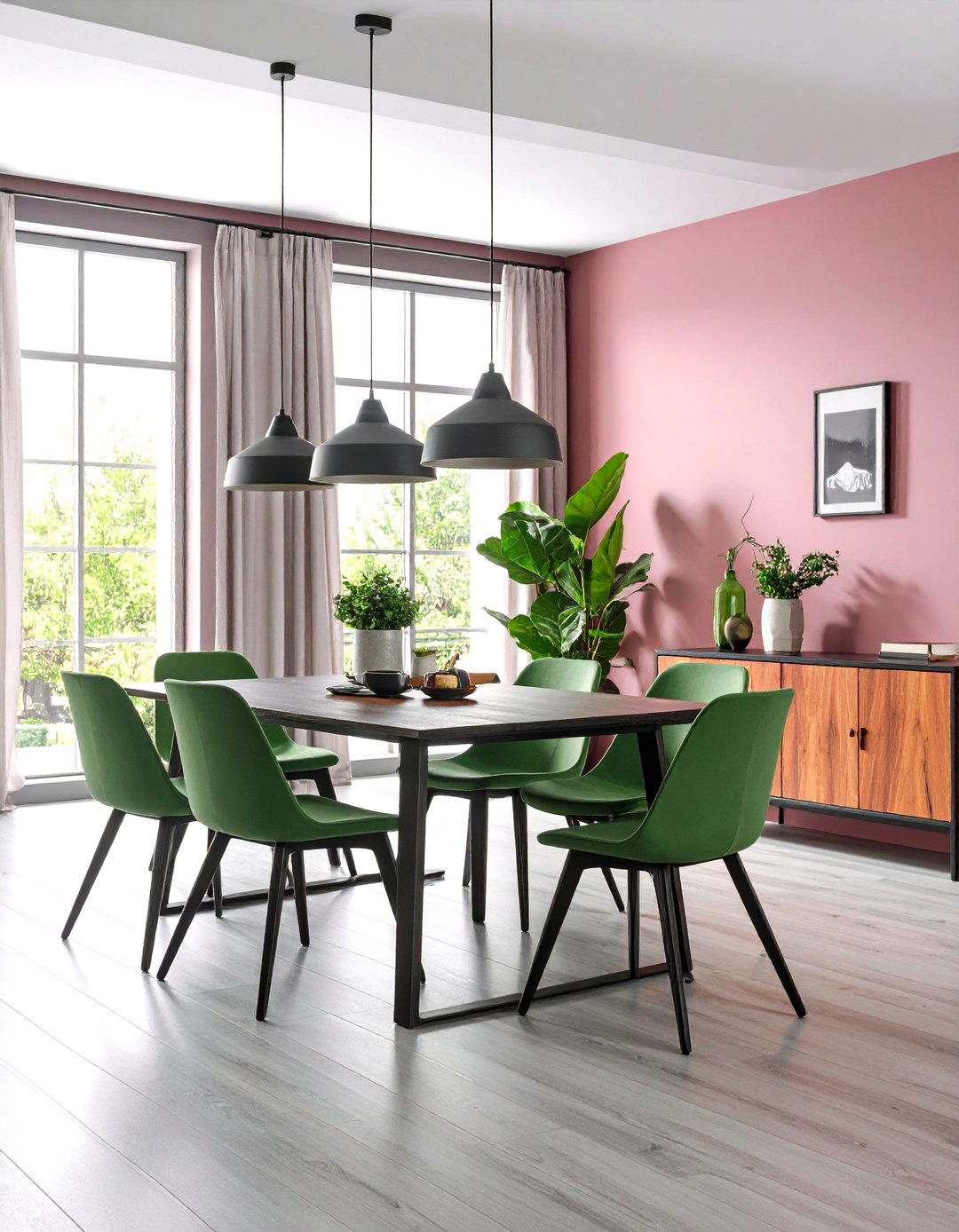
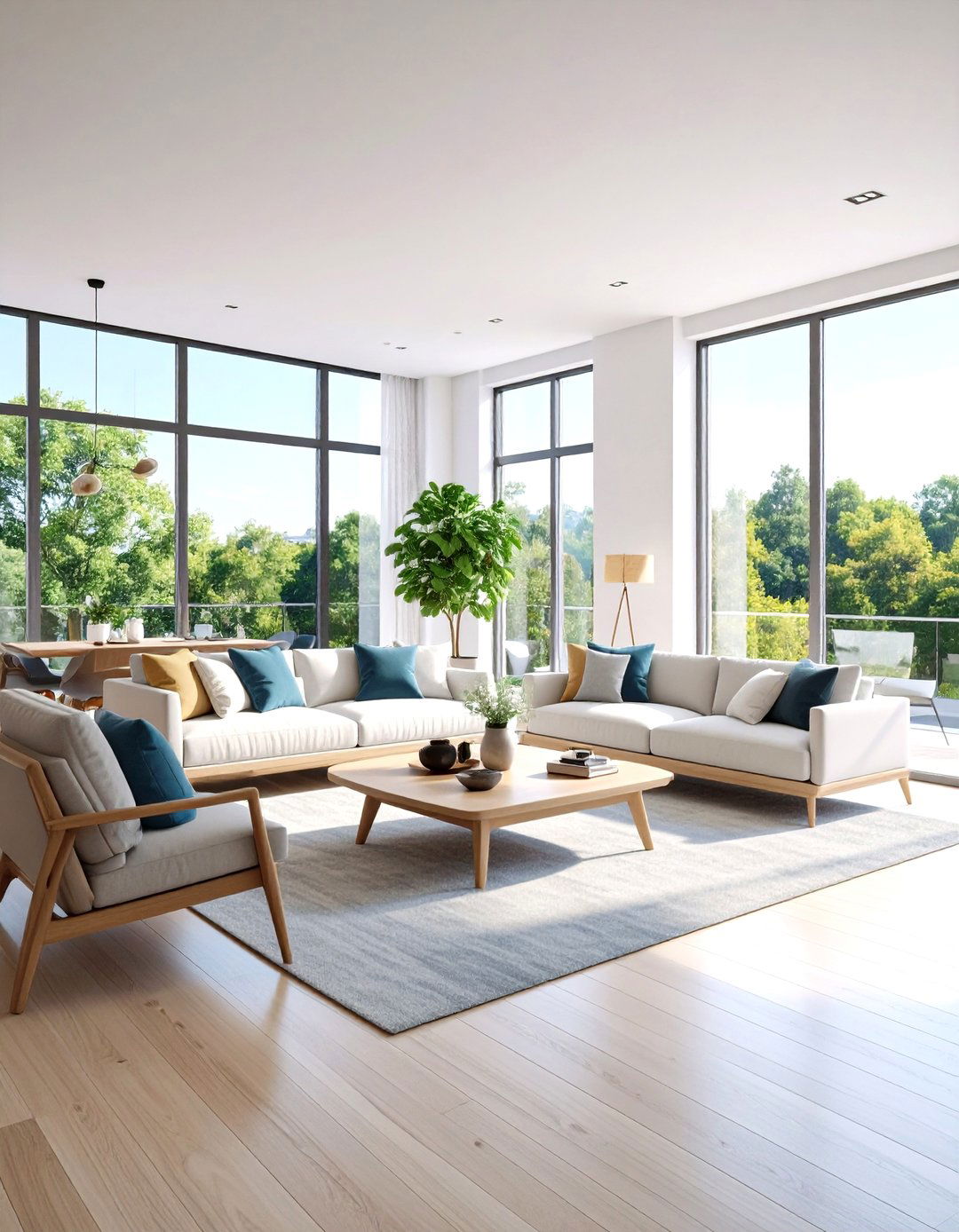



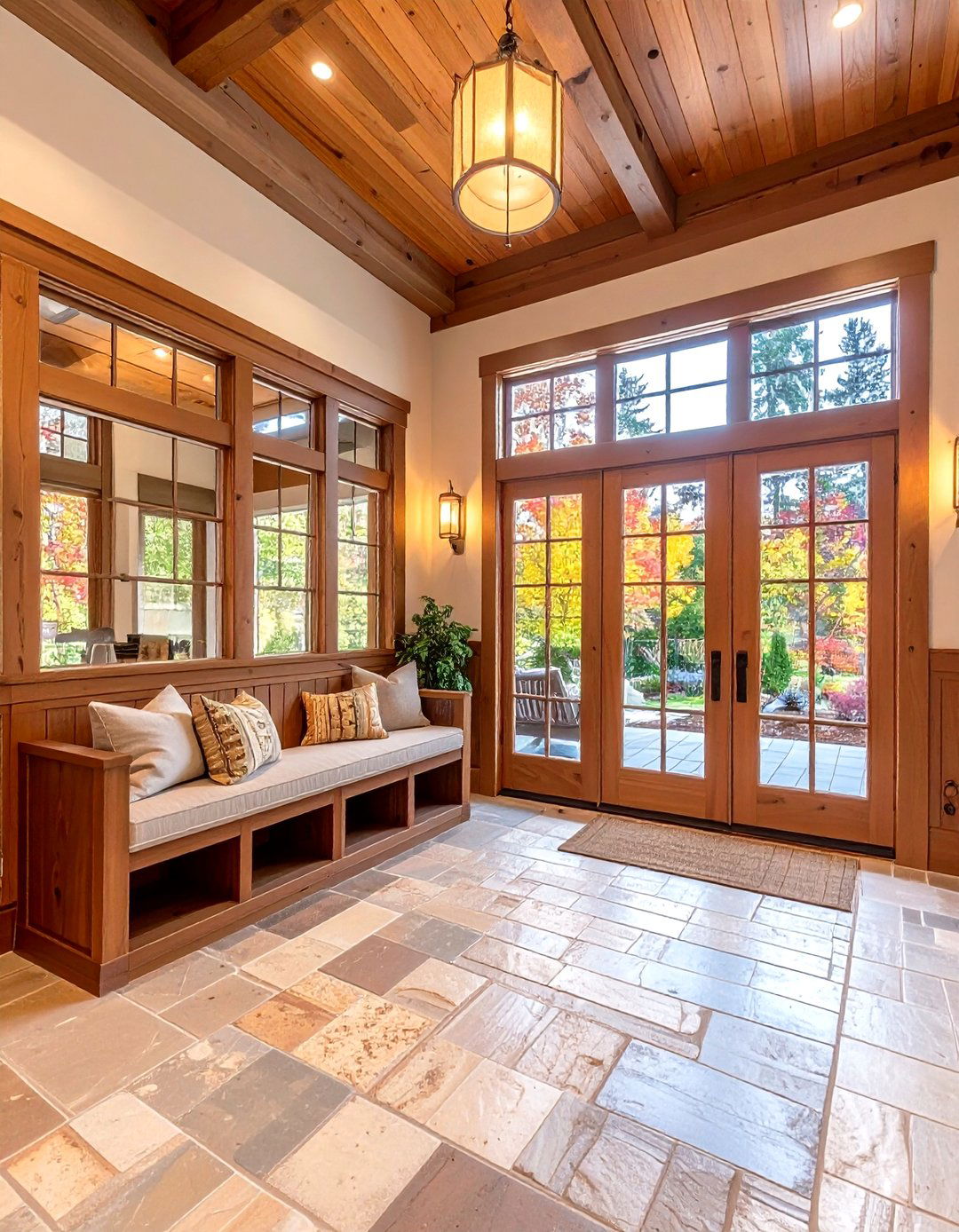
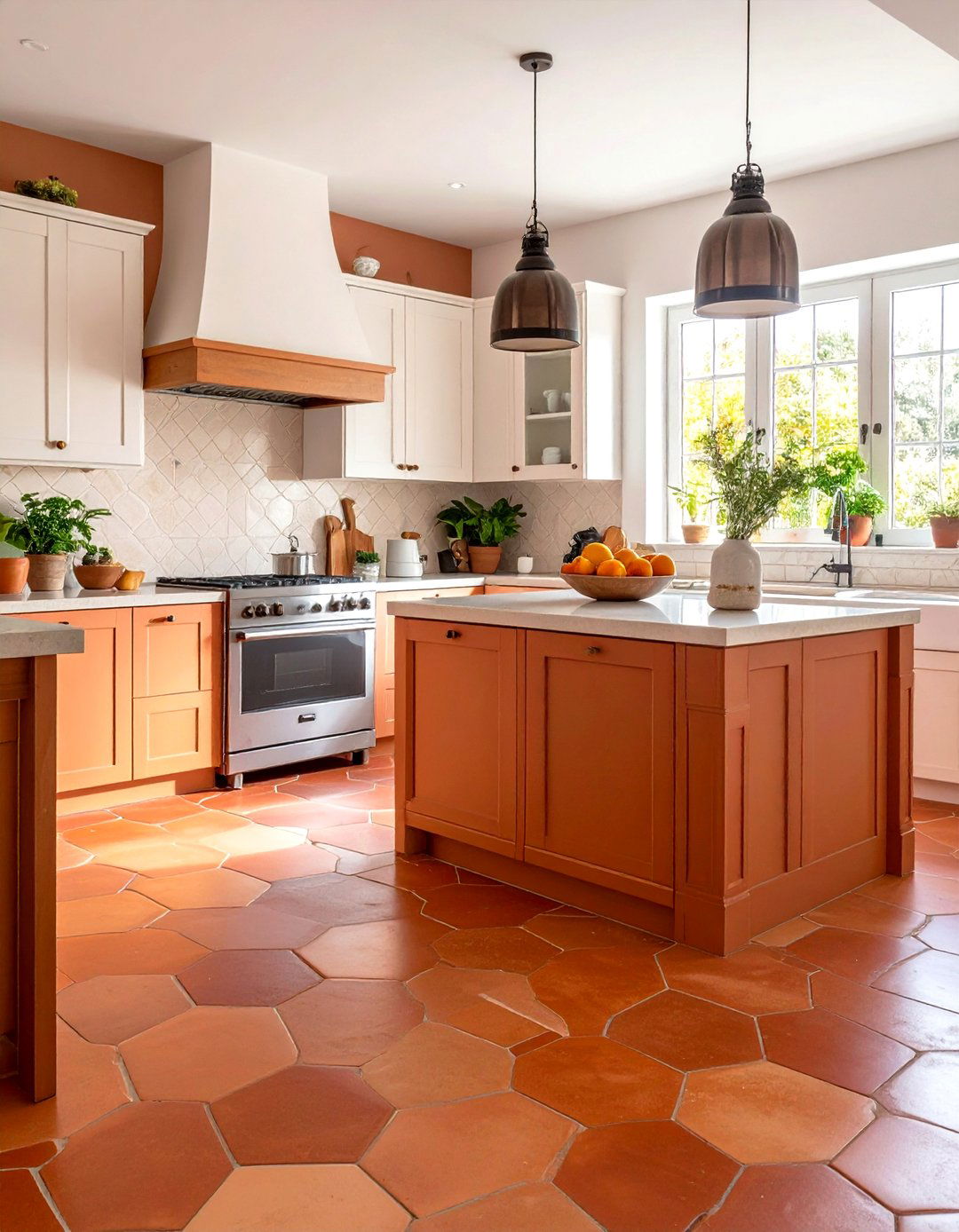

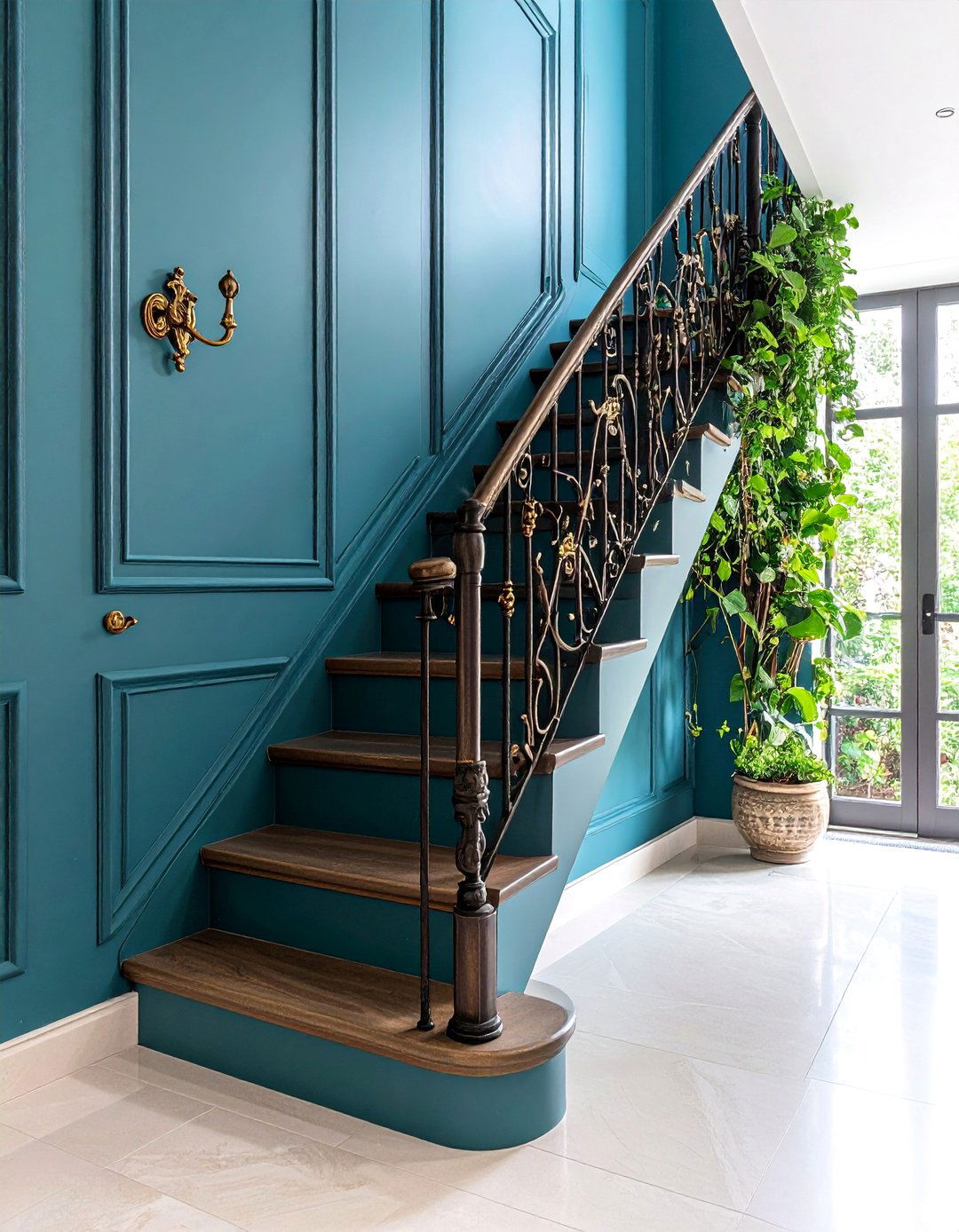
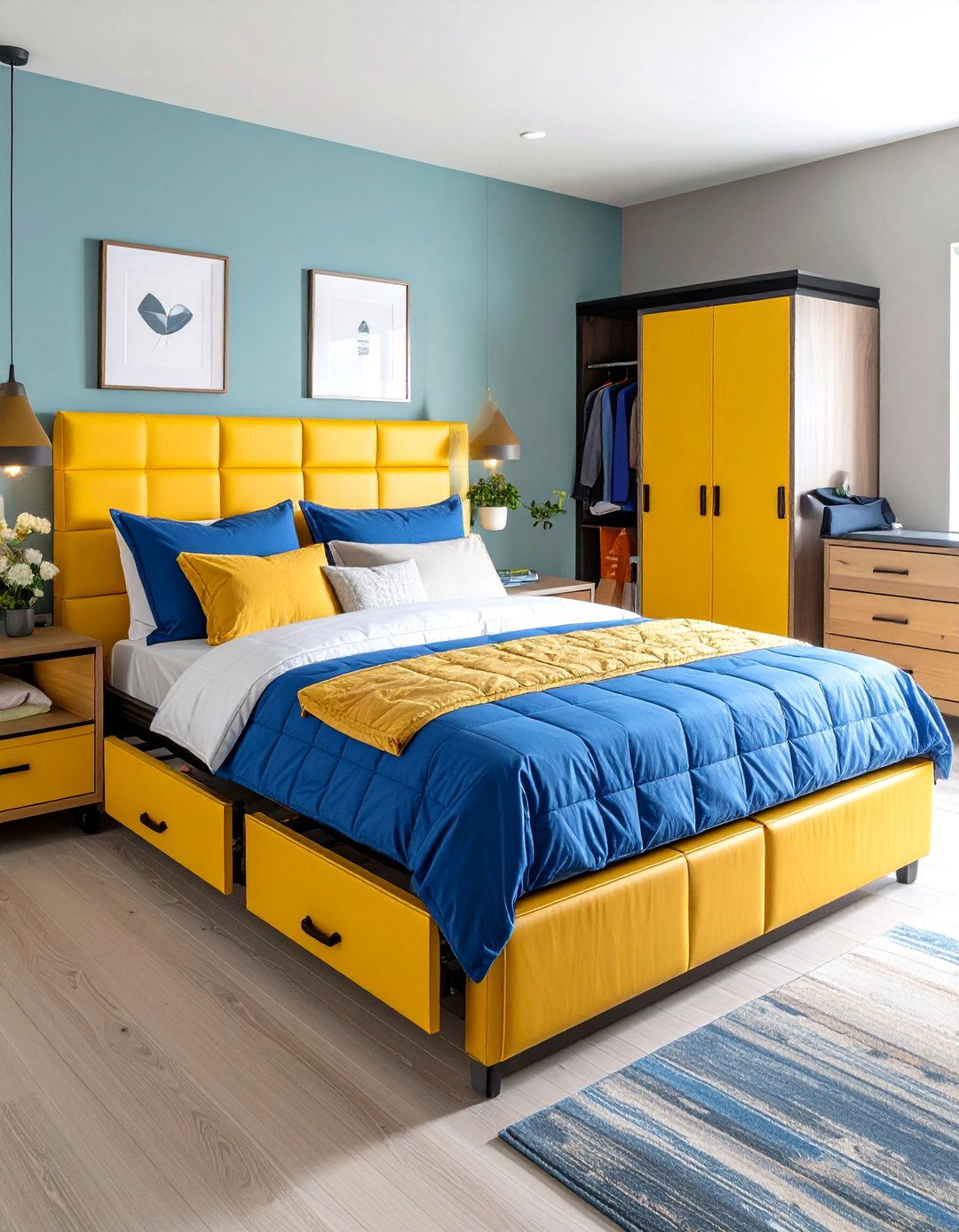

Leave a Reply